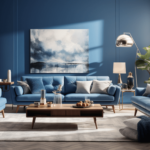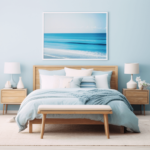Reimagine Your Living Room With Exciting Colour Schemes
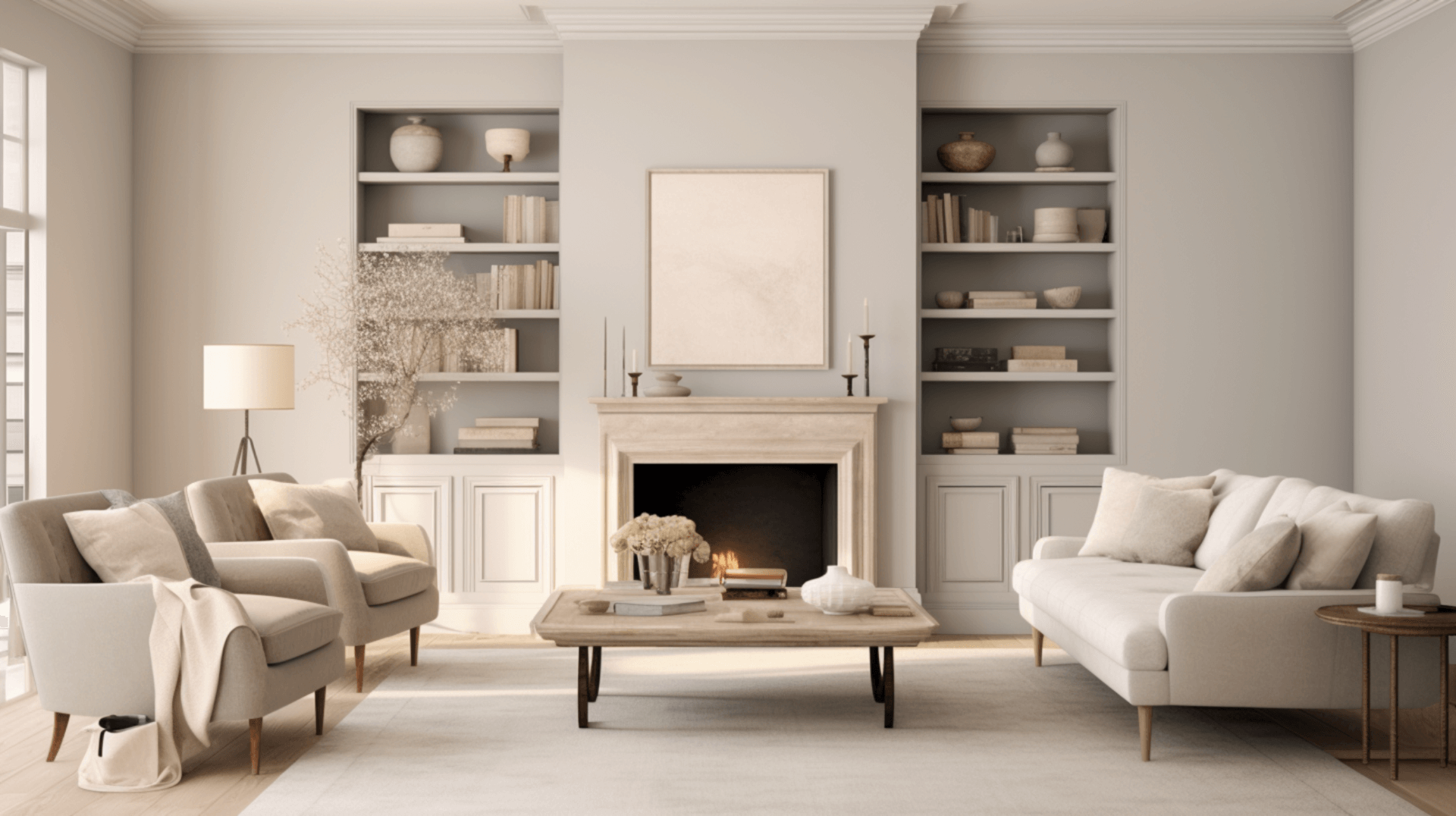
The living room is often considered the heart of any home, a place where family and friends gather to relax and spend quality time together. One way to breathe new life into this important space is by reimagining its colour scheme.
By carefully choosing and incorporating exciting colour combinations, you can transform your living room into a vibrant and inviting haven. In this article, we will explore various techniques and strategies for creating an aesthetically pleasing colour palette that suits your personal style and enhances the overall ambiance of your living room.
From understanding colour psychology to incorporating accent colours and natural elements, we will provide you with practical tips and inspiration to help you achieve a truly captivating and personalised living room design.
So, get ready to embark on a colourful journey and discover the endless possibilities that await you in reimagining your living room with exciting colour schemes.
Choosing a colour Palette
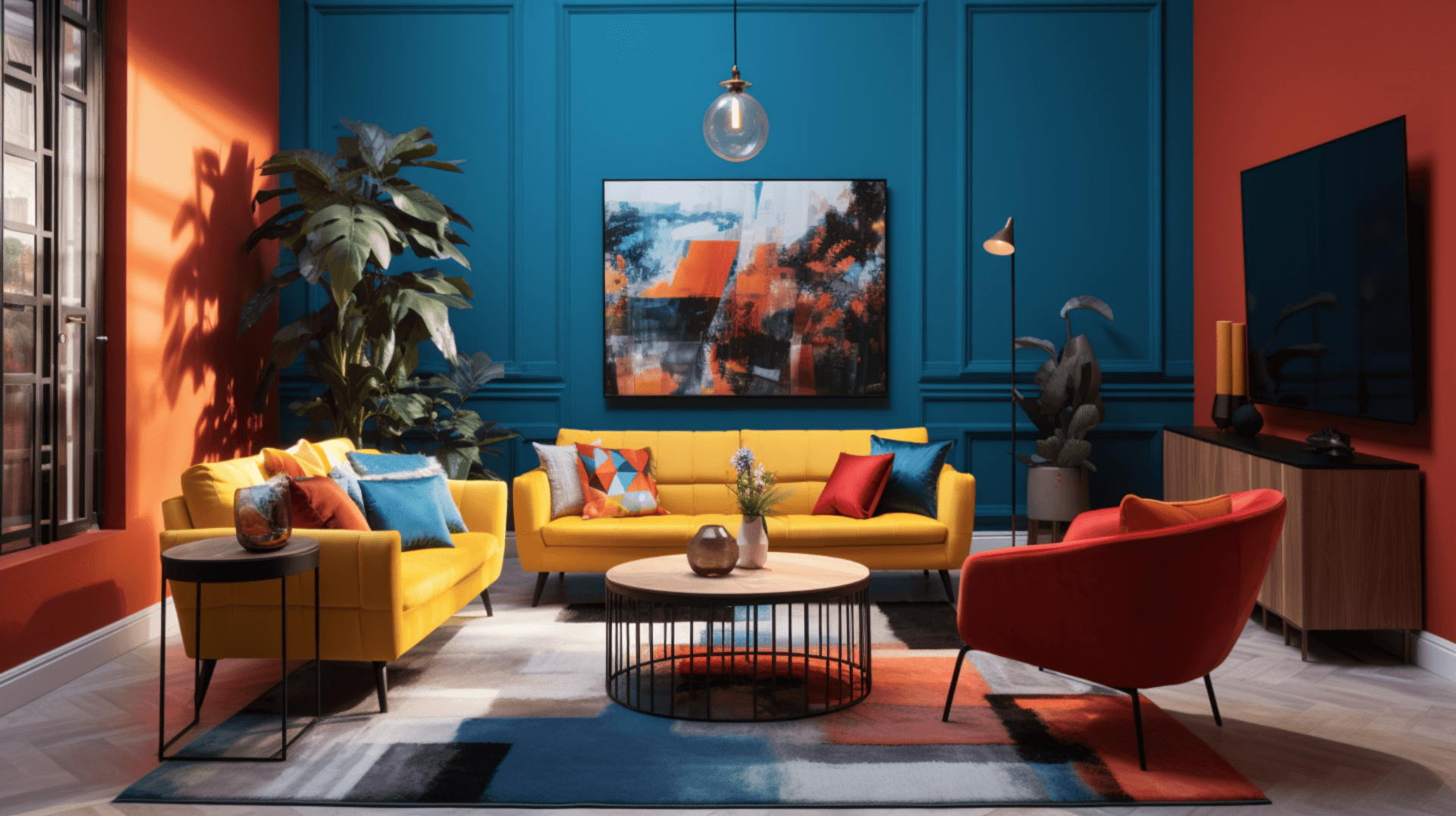
The process of selecting a colour palette for your living room entails carefully considering various combinations of hues, tones, and shades that will transform the space into an aesthetically pleasing environment.
Choosing the right colour scheme is crucial as it sets the mood and ambience of the room. Warm colours such as reds, oranges, and yellows create a cosy and inviting atmosphere, while cool colours like blues, greens, and purples promote a sense of calm and tranquillity.
Neutral colours like whites, greys, and beiges provide a timeless backdrop that can be easily accessorised with pops of colour. Additionally, contrasting colours can be used to create visual interest and focal points within the room.
Ultimately, the colour palette chosen should reflect the homeowner’s personal style and preferences while also considering the size and natural lighting of the space.
Creating a Focal Point
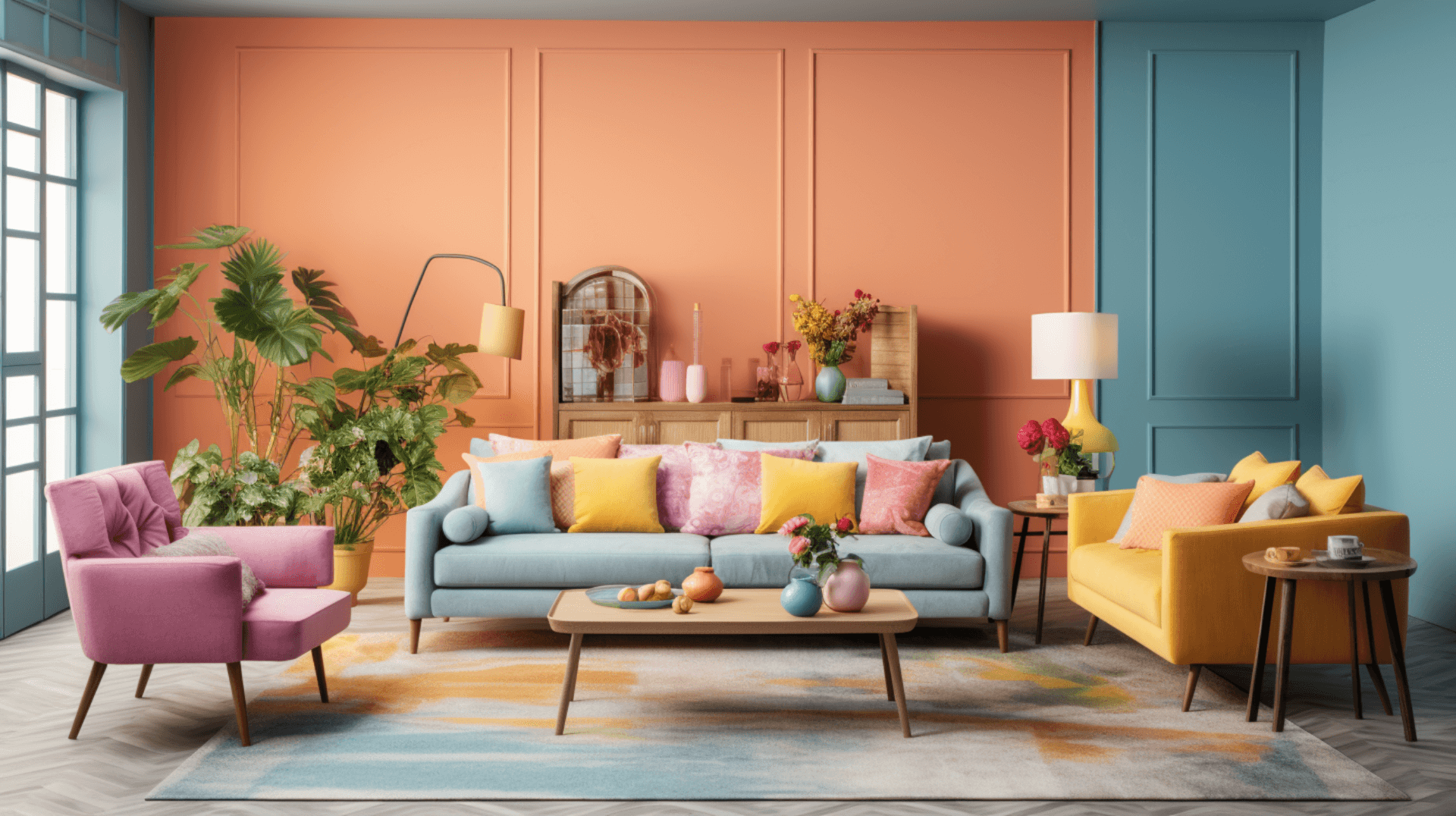
Creating a focal point in a living space involves strategically placing a visually captivating element that draws the viewer’s attention and anchors the room’s design. This element serves as the main attraction, commanding the focus of the room and enhancing its overall aesthetic appeal.
By utilising colour schemes, furniture placement, and decorative accents, a focal point can be effectively created. For example, a vibrant accent wall with a bold colour can serve as a focal point, while a large piece of artwork or a statement furniture piece can also achieve the same effect.
Additionally, utilising lighting techniques, such as spotlighting or pendant lights, can further enhance the focal point and create a visually stunning impact.
Ultimately, creating a focal point in a living room allows for a visually stimulating and cohesive design that captivates the viewer’s attention and elevates the overall ambiance of the space.
Incorporating Accent colours
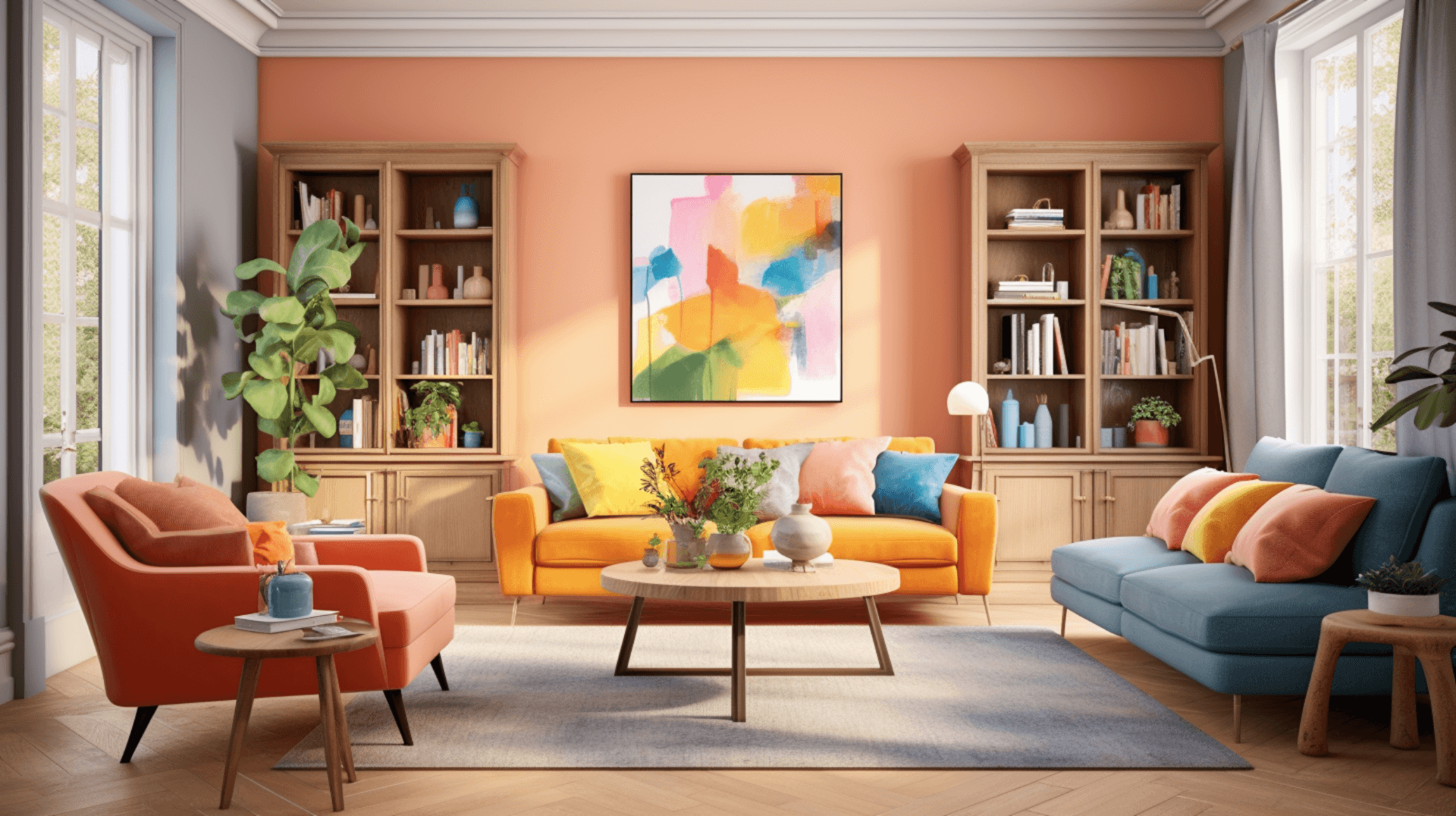
When incorporating accent colours into a living space, it is essential to strategically select hues that complement the existing colour palette and add visual interest without overwhelming the overall design.
Accent colours can be incorporated in various ways to enhance the aesthetic appeal of a living room. Here are three key ways to incorporate accent colours:
-
Use accent pillows: By choosing pillows in bold, contrasting colours, you can create a focal point and add a pop of colour to your living room.
-
Introduce accent furniture: A statement piece of furniture in a vibrant colour can instantly transform the look of a living room.
-
Hang colourful artwork: Incorporating artwork with vibrant hues can bring life to your living room and serve as a focal point.
By following these tips, you can successfully incorporate accent colours into your living room and create a visually appealing and harmonious space.
Using colour Psychology
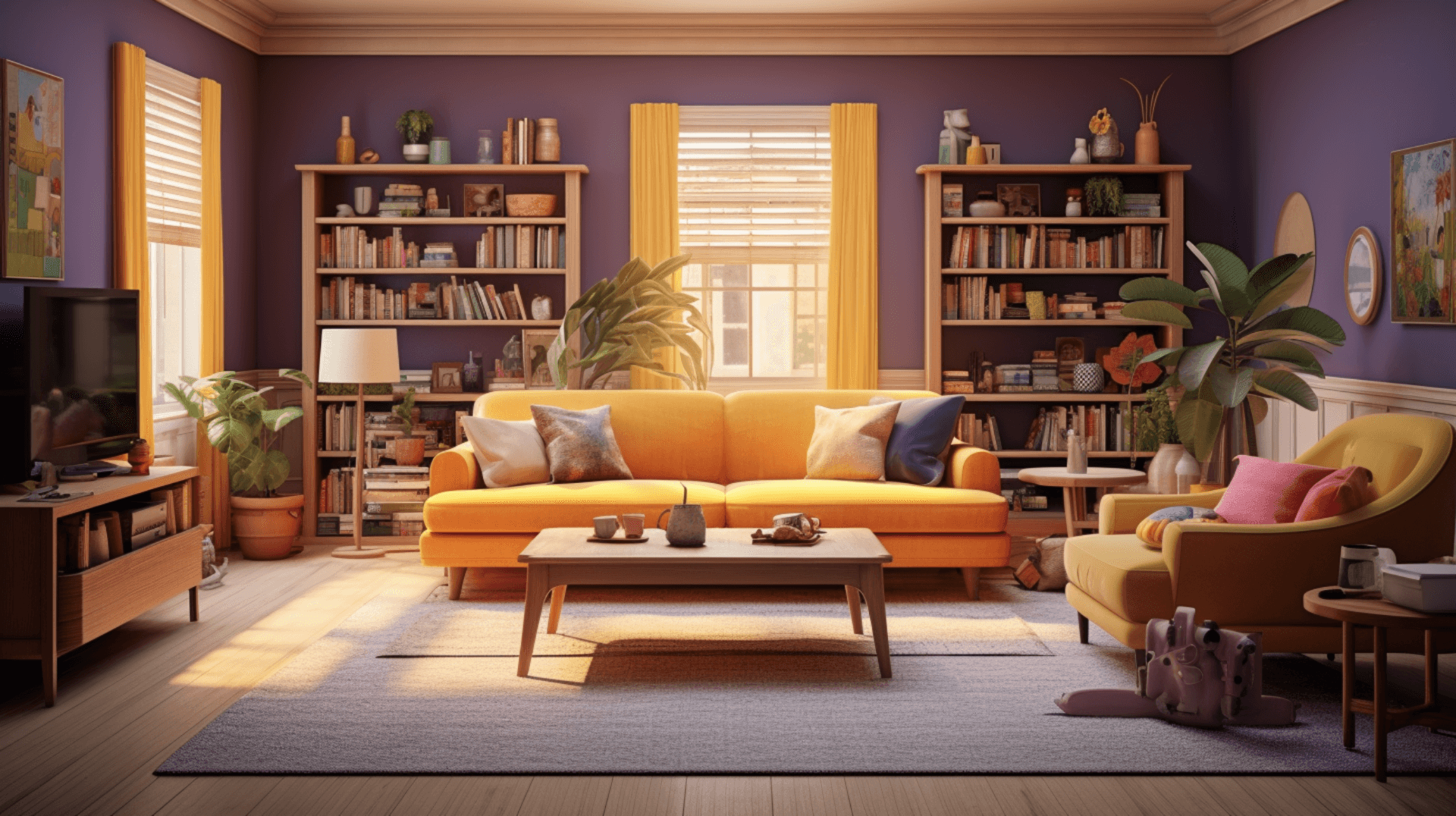
utilising colour psychology in interior design allows for a deeper understanding of how different hues can evoke specific emotions and create a harmonious atmosphere in a living space. colours have the power to influence our mood, behaviour, and overall well-being.
By strategically incorporating colours that align with the desired ambiance, homeowners can create a space that promotes relaxation, focus, or energy, depending on their needs. For example, cool colours such as blues and greens are often associated with tranquillity and calmness, making them suitable for bedrooms or spaces designated for relaxation.
On the other hand, warm colours like reds and oranges can stimulate energy and creativity, making them ideal for areas where social interaction or productivity is desired, such as living rooms or home offices.
By understanding the psychological effects of colours, homeowners can transform their living rooms into personalised and emotionally satisfying spaces.
Mixing and Matching colours
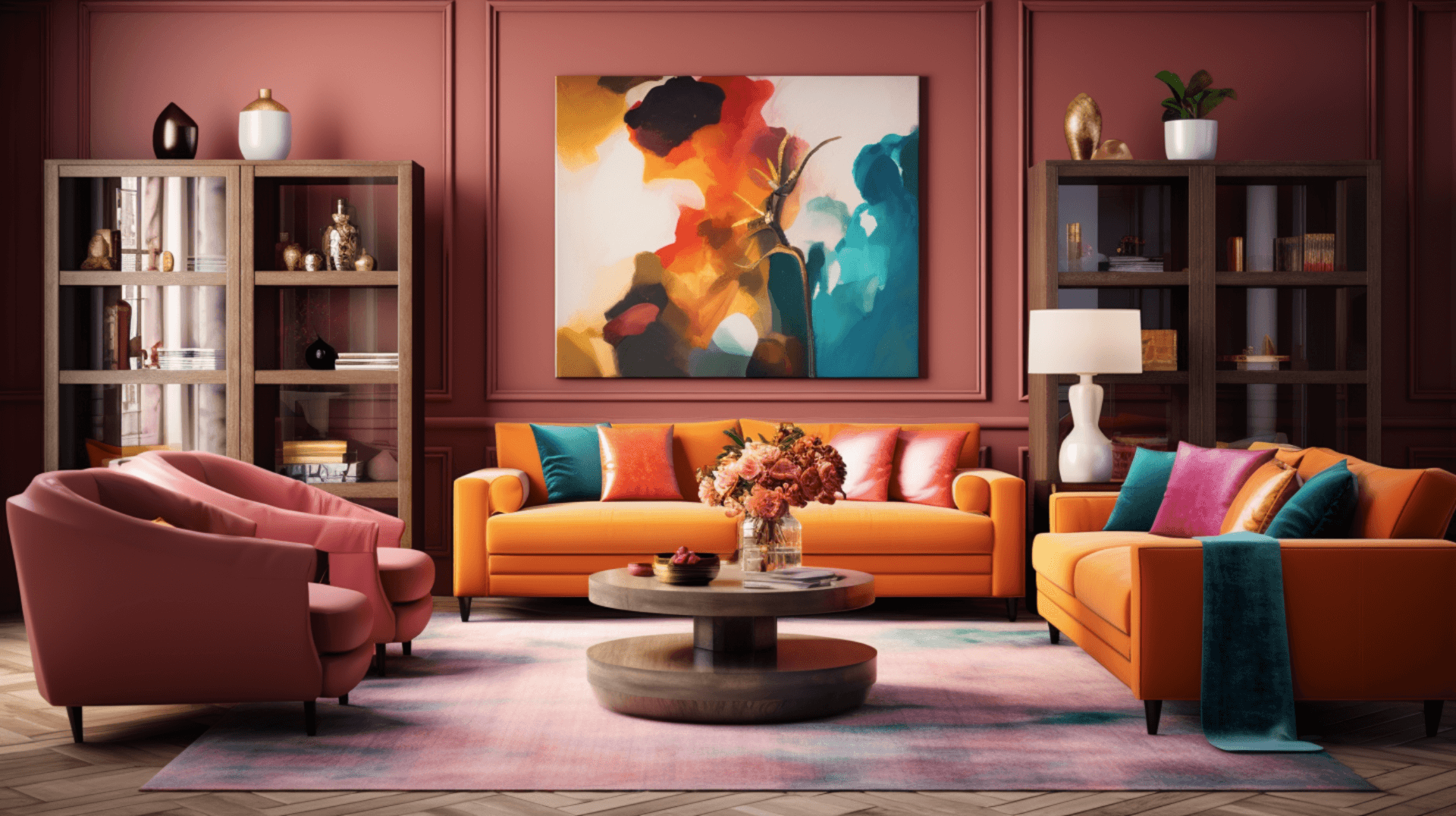
Mixing and matching colours in interior design creates a visually captivating and emotionally stimulating space that engages and enchants the senses.
By combining different hues, tones, and shades, you can achieve a harmonious and dynamic colour scheme that adds depth and interest to your living room.
When selecting colours to mix and match, it is important to consider the principles of colour theory. Complementary colours, such as blue and orange or red and green, create a striking contrast and can make a bold statement. Analogous colours, on the other hand, provide a more subtle and harmonious effect by selecting colours that are adjacent on the colour wheel.
Additionally, incorporating neutral colours such as white, grey, or beige can help balance and anchor the overall colour scheme.
Experimenting with different colour combinations allows you to personalise your living room and create a space that reflects your unique style and personality.
Working with Neutrals
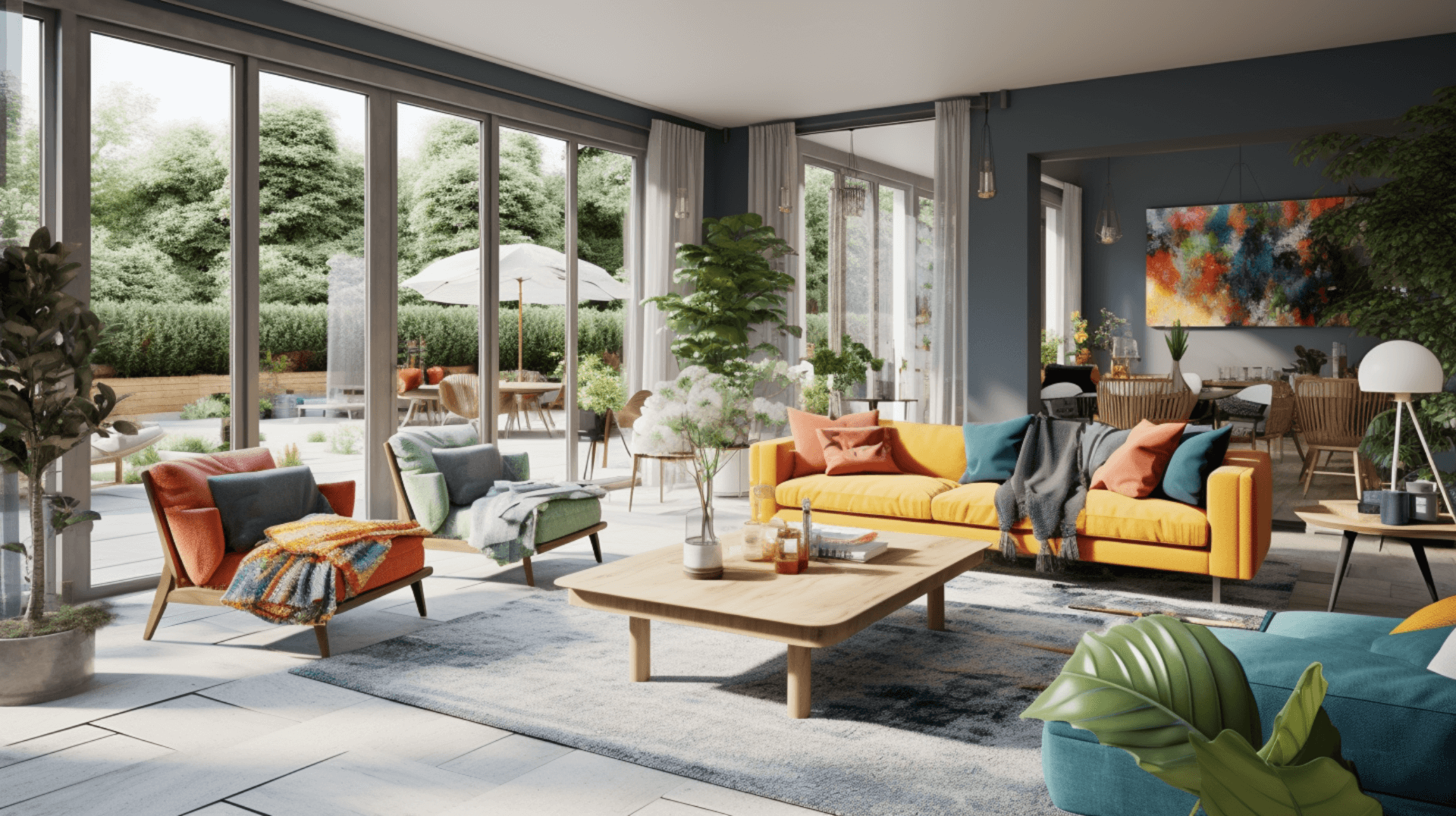
When it comes to designing your living room, choosing the right colour scheme can make all the difference. In our previous subtopic, we explored the concept of mixing and matching colours to create a vibrant and visually appealing space.
Now, let’s shift our focus to working with neutrals, a popular and versatile choice for many homeowners.
Neutrals, such as shades of white, beige, and grey, are often considered a safe and timeless option for interior design. They provide a neutral backdrop that allows other elements in the room, such as furniture and accessories, to take centre stage. Additionally, neutrals create a sense of calm and tranquillity, making them ideal for creating a relaxing atmosphere in your living room.
To add interest and depth to a neutral colour scheme, consider incorporating different textures and materials. This will help create visual contrast and prevent the space from feeling flat or boring. Whether you choose to go with a monochromatic look or mix in a few subtle pops of colour, working with neutrals offers endless possibilities for creating a stylish and sophisticated living room.
Adding Texture and Patterns
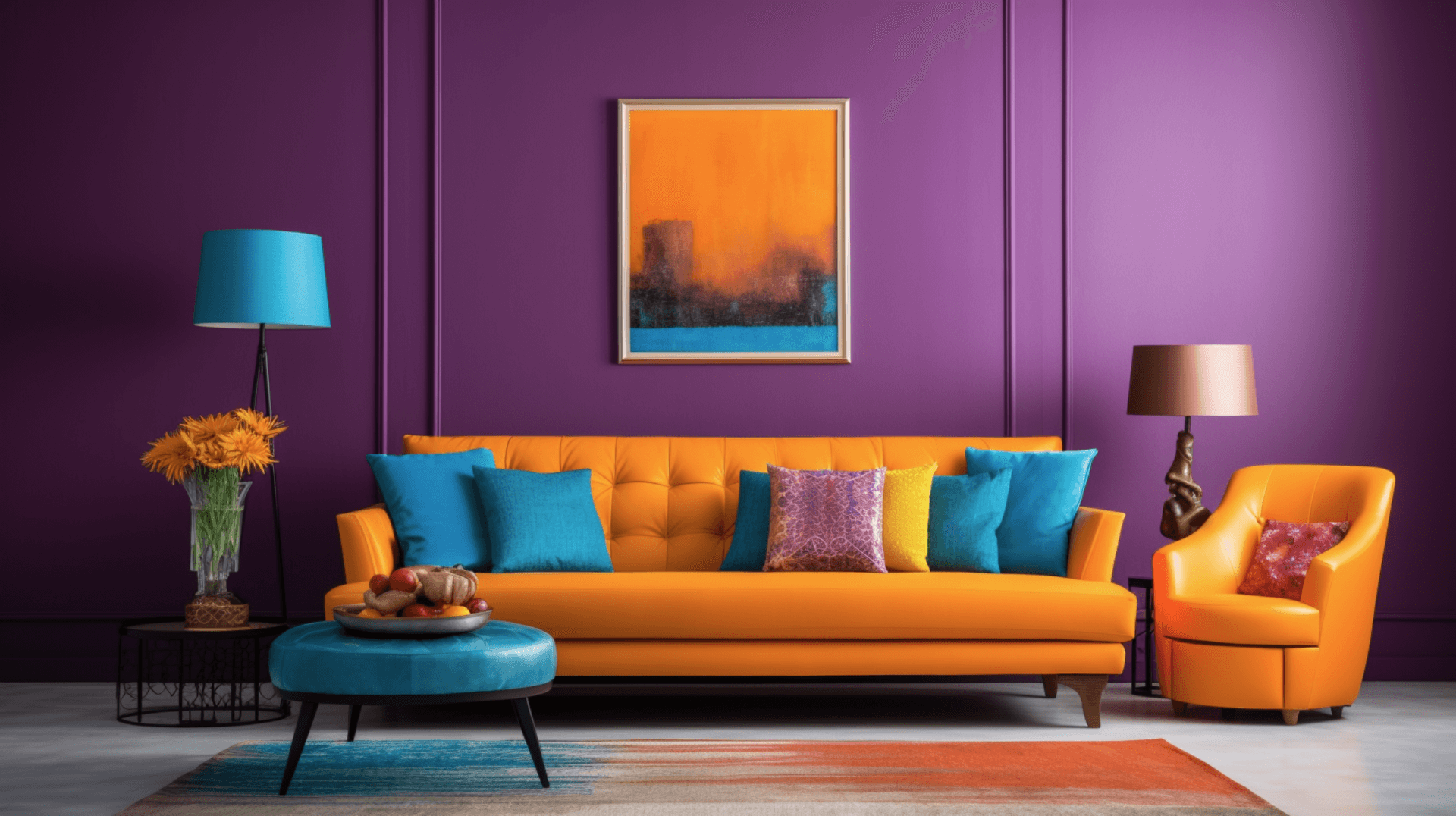
Incorporating different textures and patterns into a neutral colour scheme can add visual interest and depth to the overall design of a living room. By introducing various textures, such as velvet, linen, or jute, the room can gain a tactile appeal, creating a more inviting and cosy atmosphere.
Additionally, patterns can be utilised to add a sense of dynamism to the space. One can experiment with geometric patterns, floral motifs, or even abstract designs to create a focal point or enhance the overall aesthetic.
However, it is important to strike a balance between textures and patterns to prevent the room from appearing overwhelming or cluttered. By carefully selecting and combining these elements, a living room can be transformed into a visually captivating and harmonious space.
Considering Lighting Effects
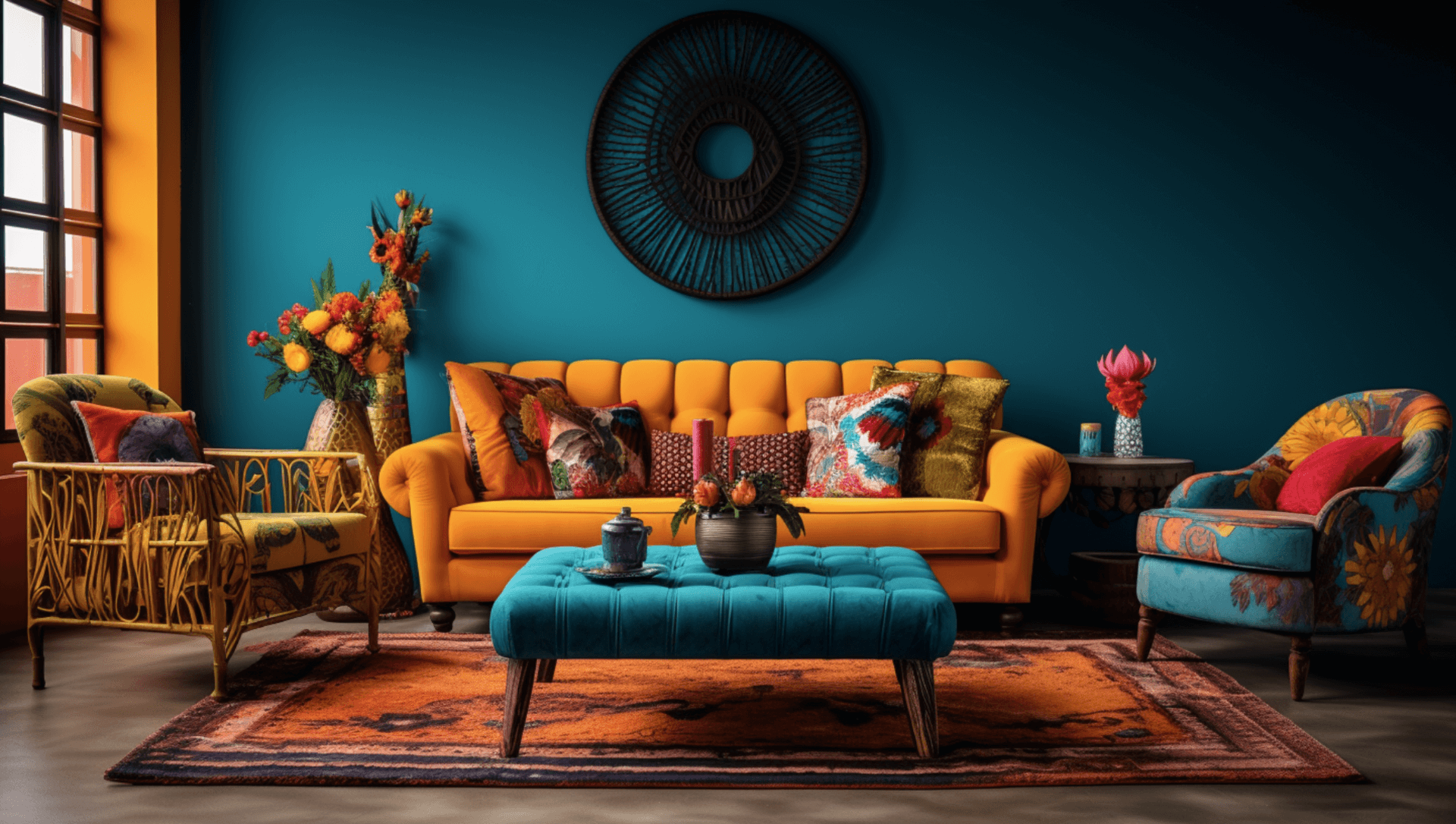
Considering the interplay of lighting effects can enhance the ambiance and atmosphere of a living room, creating a visually captivating and dynamic space. Lighting is a crucial element in interior design as it has the power to transform a room’s mood and functionality.
Here are three ways to utilise lighting effects in your living room:
-
Accent lighting: Highlighting specific features or objects in the room can create a focal point and add depth to the overall design. Use spotlights or track lighting to draw attention to artwork, architectural details, or decorative elements.
-
Mood lighting: Adjusting the brightness and colour temperature of the lights can set the desired mood in the living room. Warm, dim lighting can create a cosy and intimate ambiance, while brighter, cooler lighting can make the space feel more energetic and vibrant.
-
Natural lighting: maximising natural light can make a room feel spacious and airy. Consider using sheer curtains or blinds that allow sunlight to philtre through, and strategically placing mirrors to reflect natural light and make the room appear brighter.
By carefully considering lighting effects, you can transform your living room into a visually stimulating and inviting space.
Balancing Bold and Subtle Tones
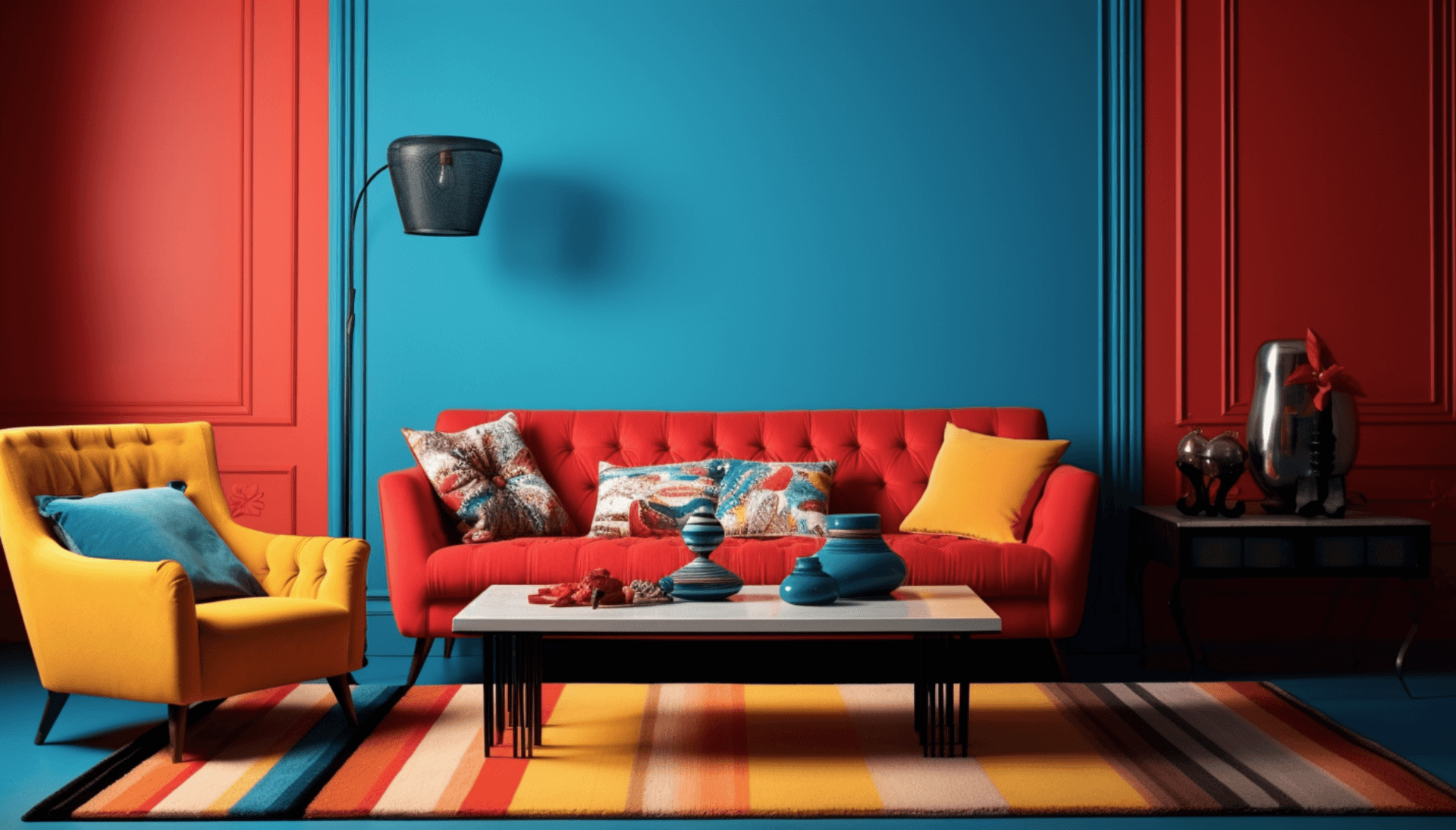
To create a harmonious and visually captivating living room, it is essential to strike a balance between bold and subtle tones in the overall colour scheme.
Bold tones can add depth and drama to a space, while subtle tones provide a sense of calm and balance. A successful colour scheme combines both elements to create a visually interesting and cohesive design.
One way to achieve this balance is by using bold tones as accents against a backdrop of subtle tones. For example, a bold accent wall in a deep blue can be balanced with neutral furniture and accessories in shades of beige or grey.
Another approach is to use a mix of bold and subtle colours throughout the room, creating a dynamic and layered effect. For instance, pairing a bold red sofa with softer, pastel-coloured pillows and curtains can create a visually striking yet balanced look.
By carefully balancing bold and subtle tones, you can reimagine your living room with an exciting and visually captivating colour scheme.
Exploring Monochromatic Schemes
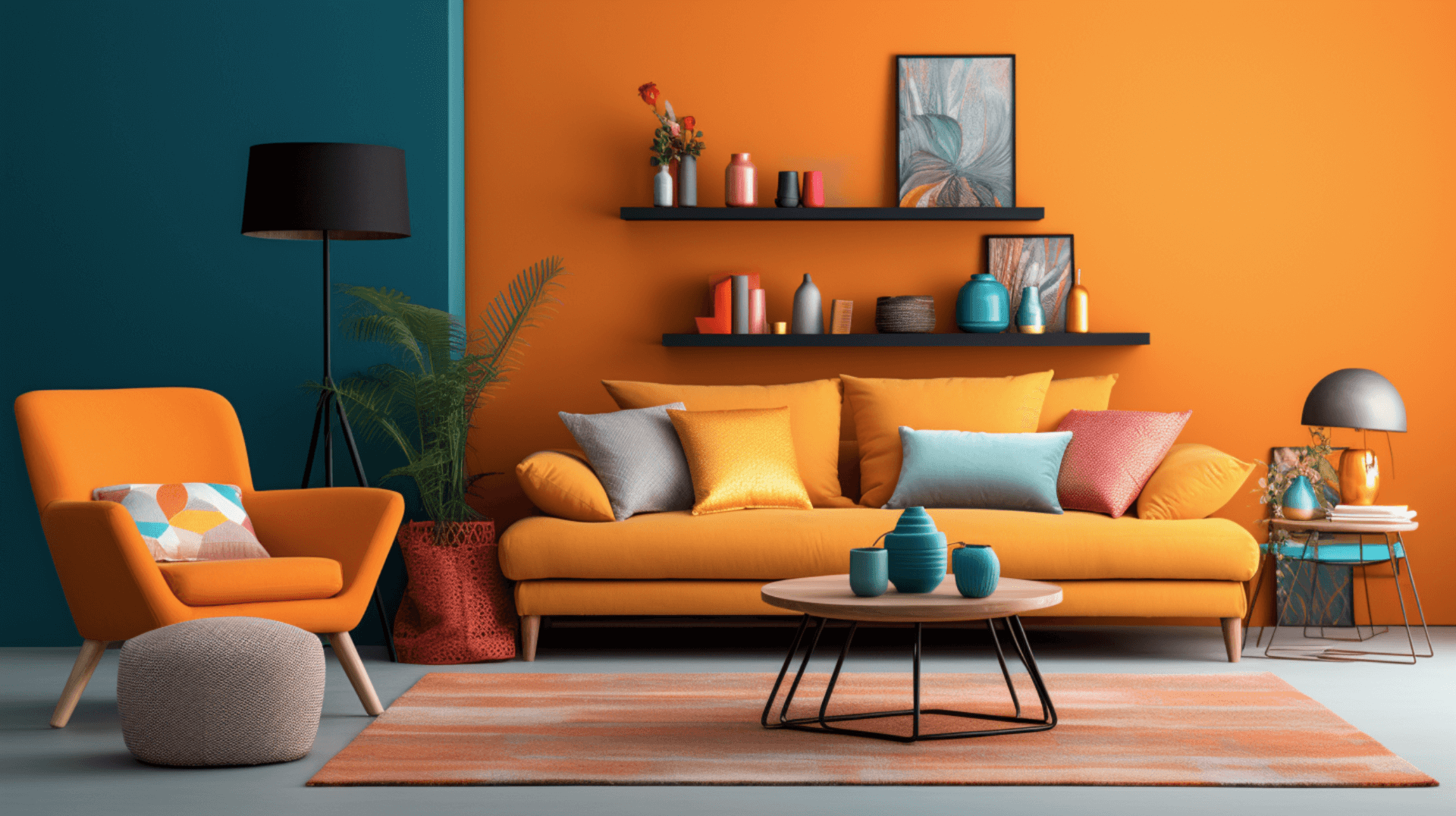
The exploration of monochromatic schemes introduces a visually captivating approach to designing a harmonious and balanced living room. By utilising a single colour in varying shades, tones, and tints, homeowners can create a cohesive and sophisticated look that exudes a sense of calm and elegance.
-
Monochromatic schemes allow for a seamless integration of furniture, accessories, and wall colours, creating a seamless and unified space.
-
This design approach offers a wide range of options, as homeowners can experiment with different hues within the same colour family, from soft pastels to rich and deep shades.
-
Monochromatic schemes also provide an opportunity to play with texture and pattern, as different materials and finishes can be used to add interest and depth to the room.
Overall, exploring monochromatic schemes can be a transformative experience, elevating the design of a living room and creating a visually captivating space that is both stylish and serene.
Embracing Contrasting colours
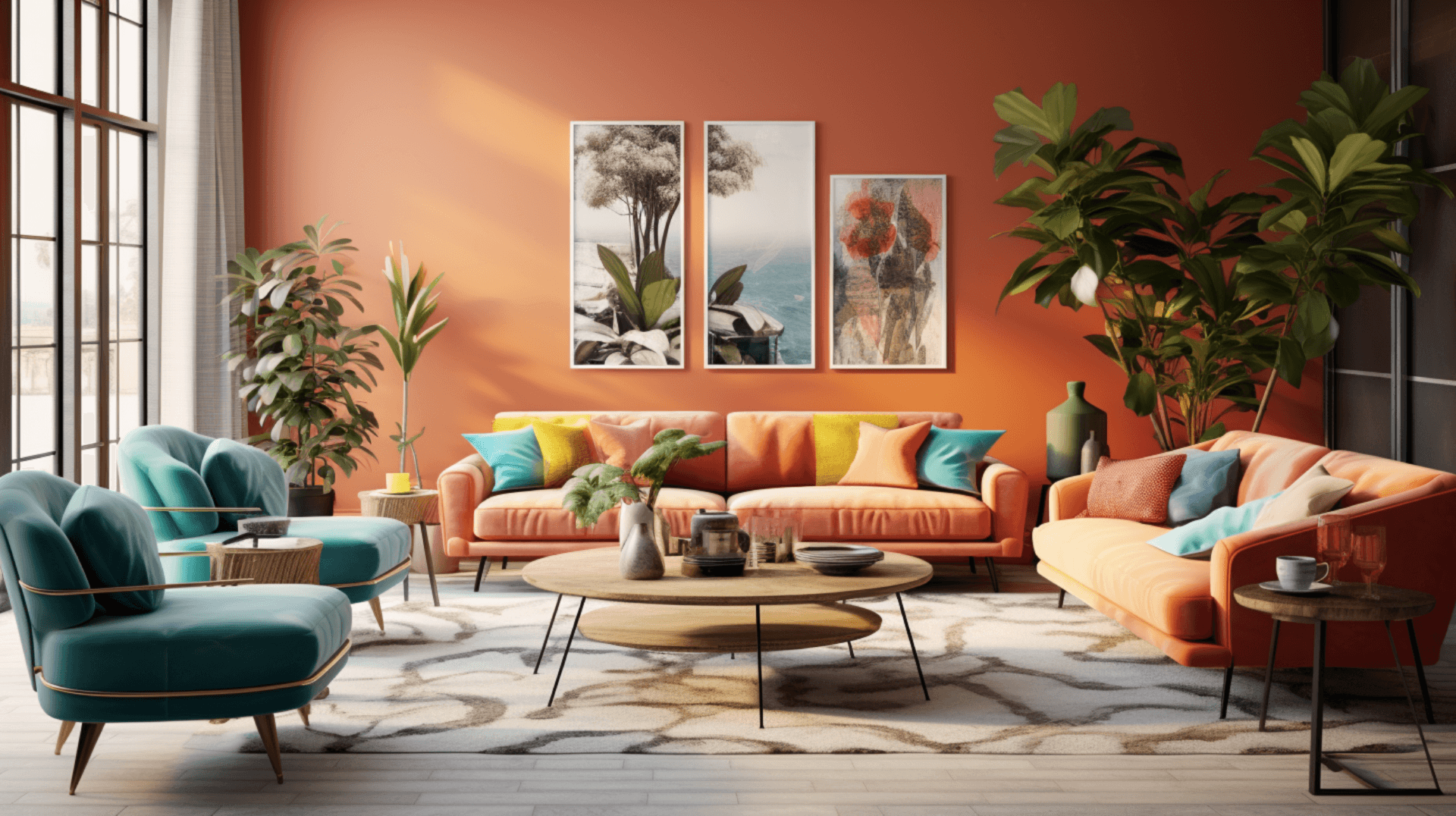
Contrasting colours can introduce a dynamic and visually stimulating element to the design of a living room, adding depth and complexity to the overall aesthetic.
By combining colours that are opposite on the colour wheel, such as blue and orange or purple and yellow, a striking visual contrast can be achieved. This contrast can create a sense of energy and excitement in the space, making it more visually interesting and engaging.
Contrasting colours also have the ability to highlight and accentuate different elements in the room, such as furniture or decorative objects. Additionally, they can evoke different moods and emotions, depending on the specific colours chosen.
Overall, embracing contrasting colours in the living room can create a bold and vibrant atmosphere that is sure to captivate and inspire.
Experimenting with colour Blocking
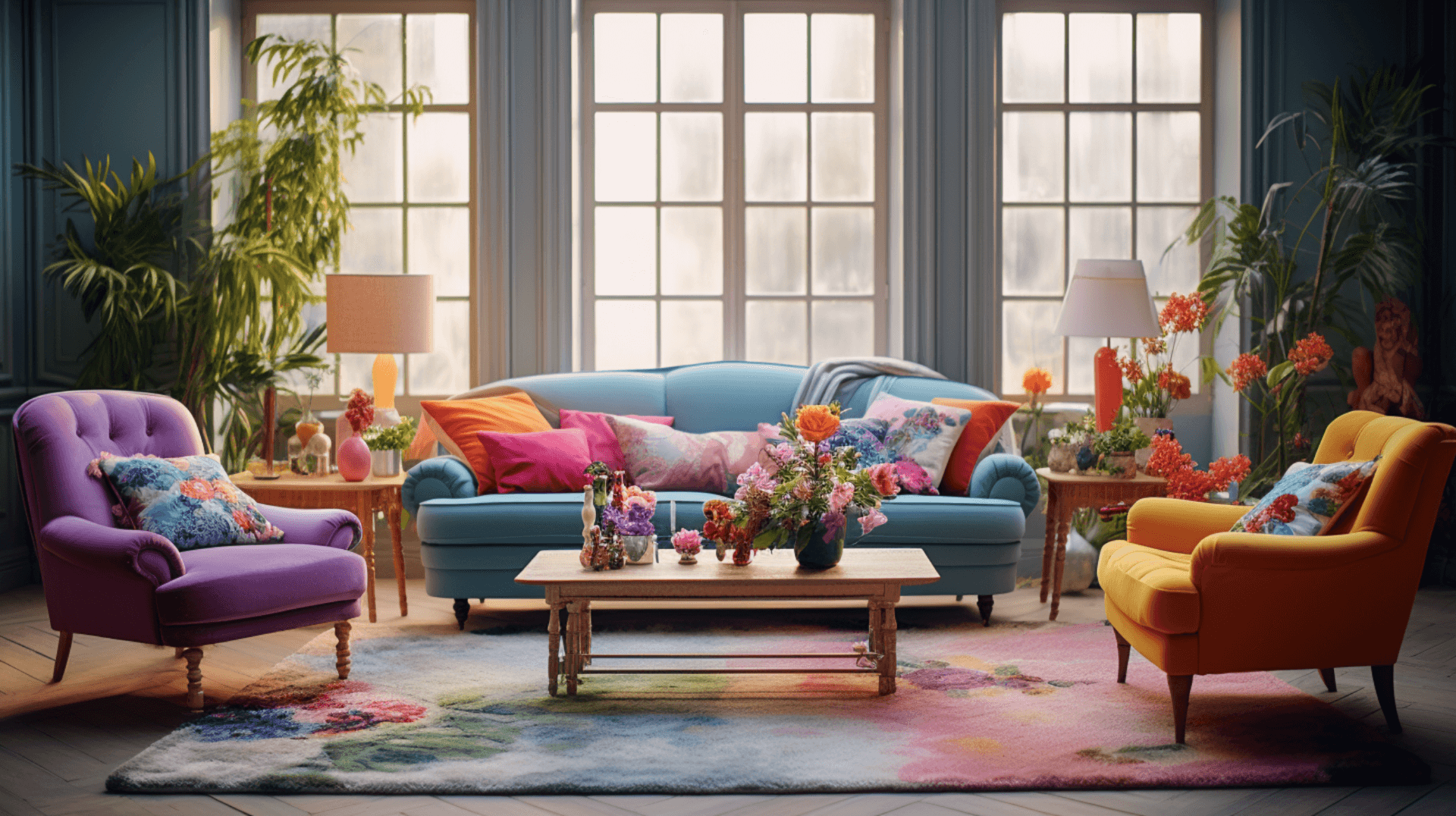
Experimenting with colour blocking can create a visually striking and modern aesthetic in the design of a living room. This technique involves using contrasting or complementary colours to create defined areas or shapes on walls, furniture, or accessories.
colour blocking allows for the creation of focal points and visual interest, making the living room more visually appealing. By strategically placing blocks of colour, one can create a sense of balance and harmony within the space.
Additionally, colour blocking can be used to create a sense of movement or direction, guiding the eye around the room. When done correctly, colour blocking can transform a simple living room into a vibrant and dynamic space that reflects the homeowner’s personality and style.
Incorporating Natural Elements
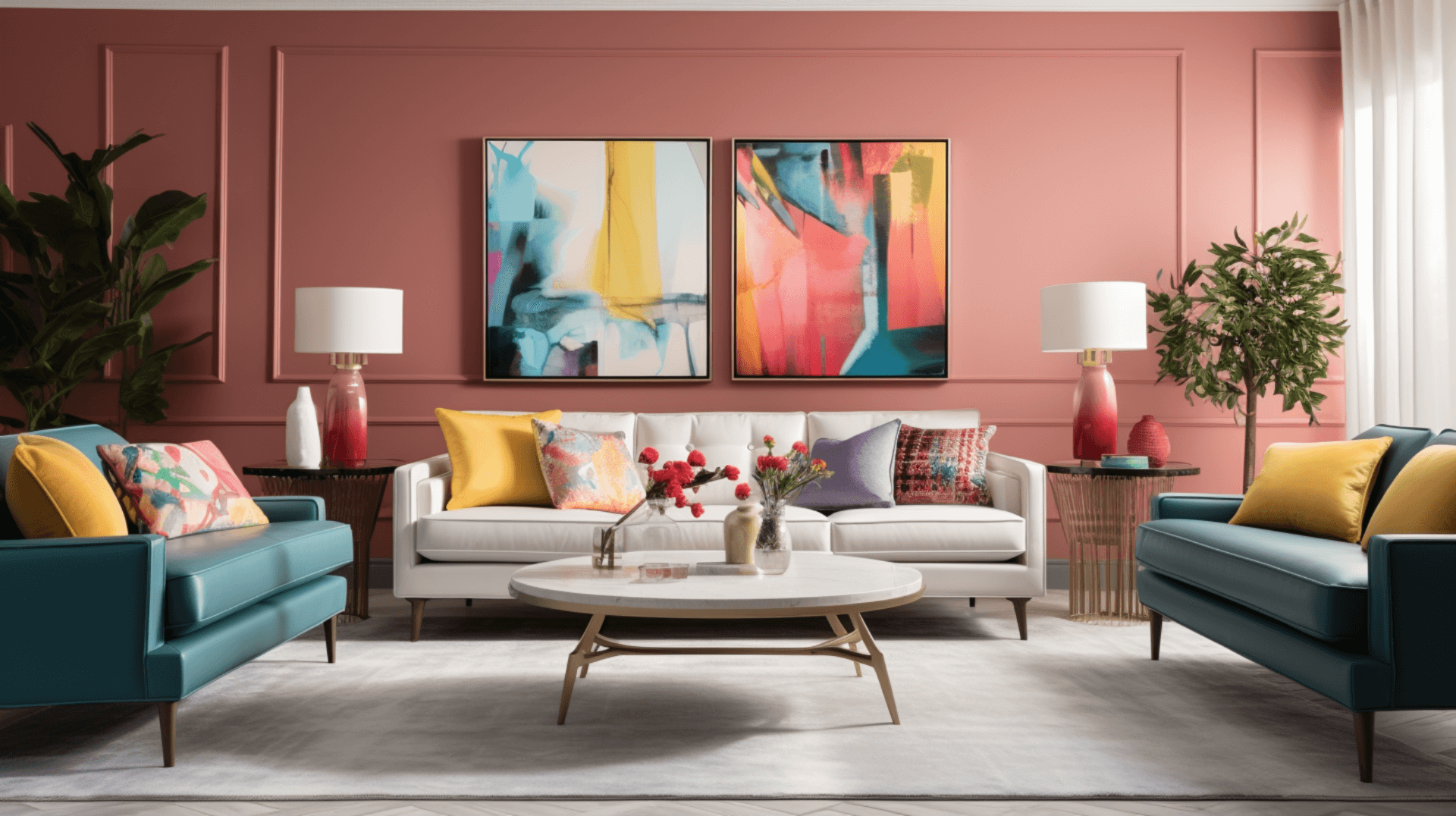
Incorporating natural elements into the design of a living room can create a calming and harmonious atmosphere, allowing for a seamless integration of the outdoors into the indoor space.
By bringing elements such as plants, natural materials, and earthy colours into the room, a sense of tranquillity and connection to nature can be achieved.
Plants not only add visual appeal, but also improve air quality and provide a sense of vitality.
Natural materials like wood, stone, and woven textures can bring a touch of rustic charm and organic beauty to the space.
Earthy colours such as greens, browns, and blues can evoke a sense of serenity and relaxation.
These natural elements work together to create a space that feels grounded, refreshing, and inviting, providing a sanctuary from the stresses of daily life.
Using colour to Define Spaces
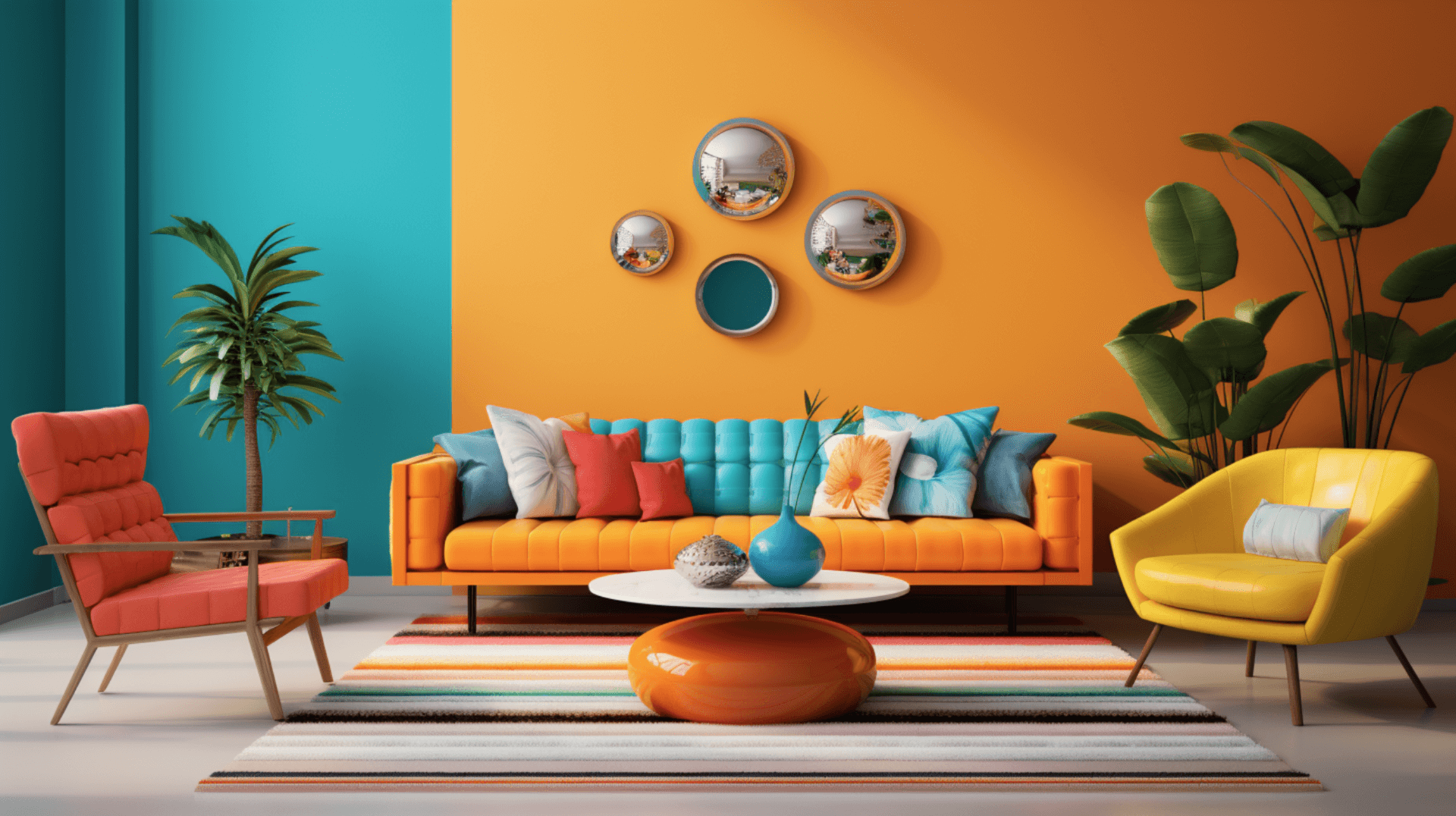
Using colour to define spaces in a living room can create a sense of cohesion and organisation, allowing for a clear distinction between different functional areas within the room.
By strategically incorporating colour, one can visually separate areas such as the seating area, dining space, and entertainment zone, making the room more visually appealing and functional.
For instance, using a warm and inviting colour palette in the seating area can help create a cosy and intimate atmosphere, while a brighter and more vibrant colour scheme in the dining space can stimulate appetite and promote social interaction.
Additionally, using contrasting colours or accent walls can further emphasise the separation between different areas, adding depth and visual interest to the room.
Overall, utilising colour to define spaces in a living room can enhance the overall aesthetics and functionality, transforming it into a well-designed and harmonious space.
personalising Your colour Scheme
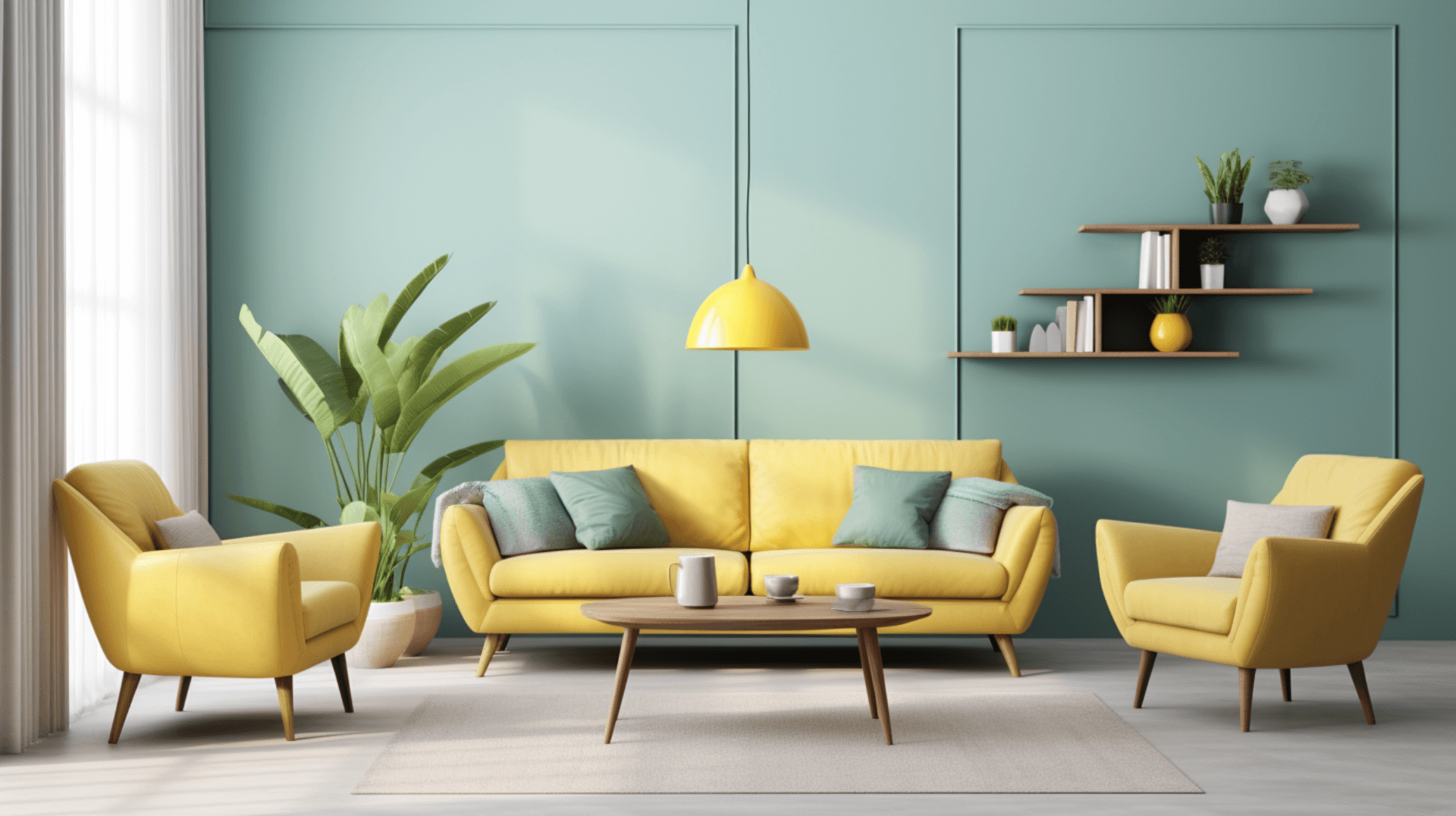
When it comes to reimagining your living room with exciting colour schemes, personalising your colour scheme is an important aspect to consider. This allows you to create a space that reflects your individual style and personality.
By choosing colours that resonate with you, you can evoke specific emotions and create a space that feels warm and inviting. To personalise your colour scheme, consider the following:
-
Reflect your interests: Incorporate colours that align with your hobbies or interests, such as vibrant blues for a beach lover or earthy greens for a nature enthusiast.
-
Consider the room’s purpose: Different colours can evoke different moods and energies. Use warm tones like yellows and oranges for a lively entertainment area, or cool blues and greens for a calming reading nook.
-
Experiment with accent colours: Add pops of colour through accessories like pillows, artwork, or rugs to add depth and visual interest to the space.
By personalising your colour scheme, you can create a living room that truly feels like your own.
Conclusion
In conclusion, when it comes to reimagining your living room with exciting colour schemes, there are various factors to consider.
Choosing a colour palette sets the foundation for the overall ambiance of the room, while creating a focal point adds visual interest.
Incorporating accent colours and utilising colour psychology can enhance the mood and atmosphere.
Mixing and matching colours, experimenting with colour blocking, and incorporating natural elements can bring a unique and vibrant touch to your living room.
Lastly, using colour to define spaces and personalising your colour scheme adds a personal and creative touch to your living room design.






